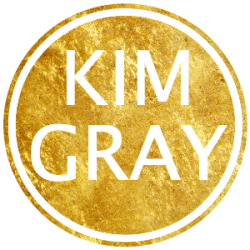So I thought about this post on my walk this morning. Something that I’ve built into my daily routine (More on that coming soon) besides exercise, is BREATHING SPACE! Because that’s when the best ideas come right!?
Well this wasn’t entirely my own idea and it’s not a completely new concept – but having read this article, it highlighted to me that we totally control our “happiness feed”! What messages / distractions are you allowing into your life? So not only is it through things like your Facebook feed, but think about your phone!
Increasingly my phone was just sucking me down a black hole! (Curiosity killed the cat, right!?)No wonder Harry’s frustrating little habit of “Mum, mum, mum, muuuum” was born! Fighting for my attention right!? SO I’ve hacked my phone to optimise my happiness and to prevent that cloudy brain!
Here’s How:
Take Off:
- I took e-mail off my phone ( E-mails are to be attended to during work hours only – plus I recently went on an “Unsubscribing purge” as a little e-mail declutter bonus)
- I took twitter Off My Phone
- I’ve kept Instagram as I find Instagram incredibly inspiring (& useful for my work) if you’re following the right people. BUT I switched the instagram notifications off.
- I took Facebook Off My Phone
SO now my phone works as a phone! Just calls or messages from people in my personal space that bring me joy, no pings or distracting alerts.
Put On:
- Nike Running App: I think the right apps can be incredibly powerful. Now I’m not saying you need to start training for the next 2 Oceans with The Nike App. And you don’t need to instagram a sweaty, kettle bell selfie to make yourself feel like you’ve ticked that box, or don’t let those get you down either. (Again it’s about creating the right feed!) Just move! I love the Nike Running App for walking, as it tells me how far I’ve walked, at what pace – and it motivates me to beat my previous pace / allows me to measure distances – so now I know if I walk to the end of the pier and back I’ve done 8km etc.. It’s just a nice little motivation tool!
- Spotify: Well any music app you can access and afford really. Music has that incredible power to change and uplift ones mood, make one run/walk faster, inspire and motivate! Just this morning I caught myself smiling – ah, when last did I just smile by myself, to myself – happy in a moment of “hey, this is such a happy tune, the sun is out and life is good!”
- Podcasts: I tend to listen to podcasts on my morning walks or if we’re traveling in the car. Podcasts are an easy way to learn something new, get inspired and kill time on those longer journeys! One of my first & favourite podcasts was Beyond The To Do List with Brooke McAlry: On simplicity, rhythms and tilting instead of balancing.
- Instagram: Again, it’s about who you follow. Unfollow everyone that is not adding value to your life, emotions or precious time! I find the write Instagram Feed can be incredibly inspiring and aspirational – really getting those creative juices flowing. I see it as a stream of ideas and dreams. It’s one to be careful with in terms of boundaries and being intentional with your time though.
- Calm / Omvana or any type of meditation app. I find using one of these apps is a game changer in the way I start my day. While my husband has a little Harry time before work, I have 20 minutes of quiet – just learning to quiet the mind.(I have a racing mid of “What If’s?” and “To-do’s!”) I always end off with a few moments of thanks & gratitude. It’s a sure way to enter the day feeling positive, calm and like, “I’ve got this!”, before the wave off work, toddler and new challenges say good morning!
So now I’ve hacked my phone to work for me instead of against me! We’re next toying with the idea of carrying camera’s again instead of using our phones . . . lets see!
I’d love to hear what apps you use to make your life more effective!?
Happy 1st Of April and have a HAPPY WEEKEND X
P.S. Here’s the song that made me smile.


